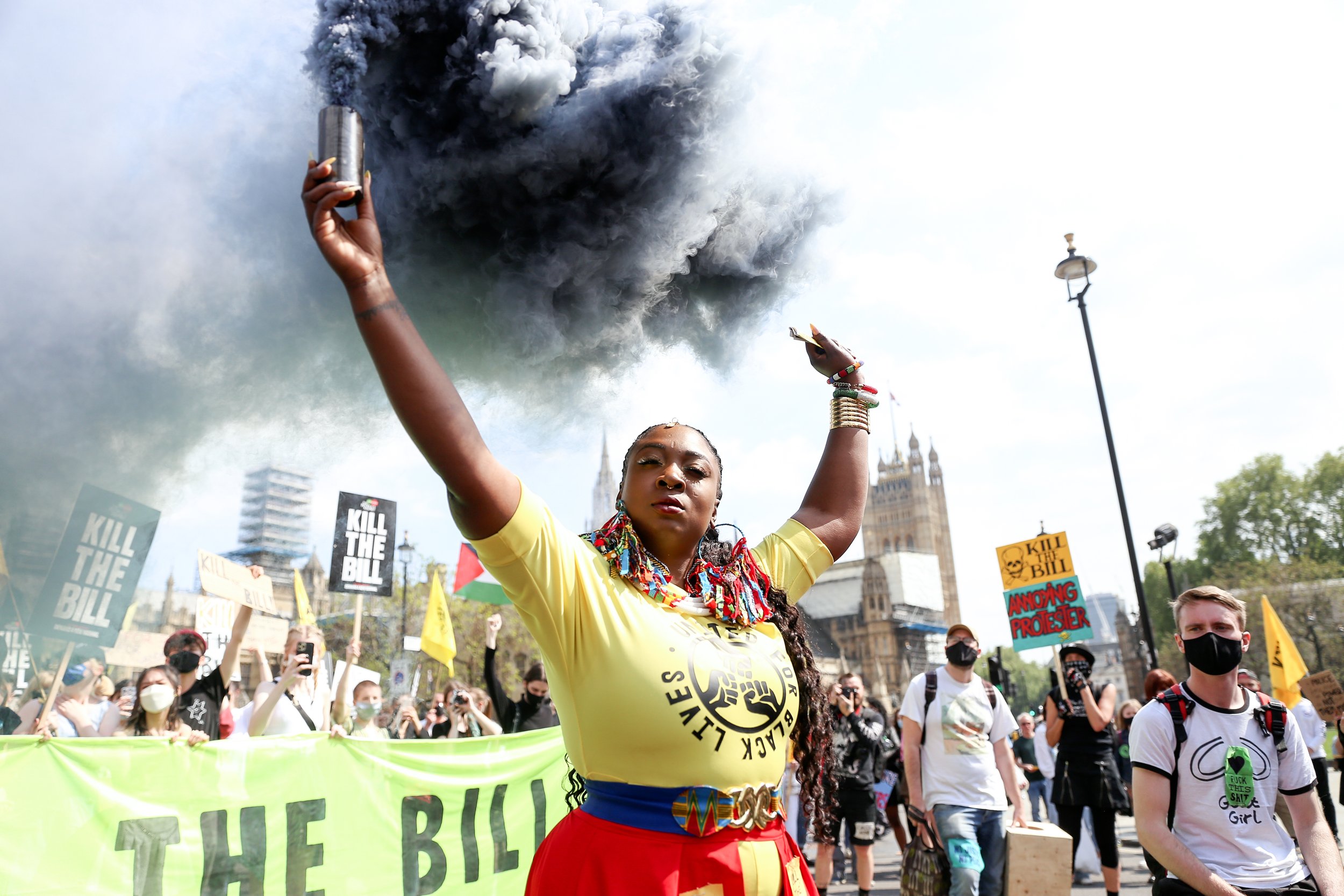Photographing Protest
Resistance through a Feminist Lens at Four Corners
Kill the Bill protest in May 2021. Photo by Bex Wade.
At Four Corners in Bethnal Green, you’ll find an archive that takes you through protest history. Photographing Protest: Resistance through a Feminist Lens is a must-see collection of protest images by feminist photographers from 1968 through to the present day. Challenging the male-dominated history of protest reportage, the exhibition poses the question: how should resistance be represented, and by whom?
Photographing Protest explores the politics of seeing and being seen, by focusing on the perspectives of women and nonbinary photographers pushing for social and political change in Britain. The exhibition features photographs taken by the women-only photographic agency Format, formed in 1983. These women captured social movements in a way that challenged the prevailing viewpoints of the male-dominated, largely right wing British press, by representing communities who received little coverage in the mainstream media – such as the women’s peace camp at Greenham Common, anti-racism protests, demonstrations for LGBTQ+ rights, disability rights, pro-abortion rights, and more.
Installation shot, courtesy of Four Corners.
When protesting today, there is a further complexity to seeing and being seen. Now that anyone can document anything at any time using their phone, being photographed at a protest can be dangerous – police in the UK have increasingly used social media monitoring, facial recognition technologies and drone surveillance to track protesters. The exhibition questions the impact of modern technology on documentation and resistance.
There is also an exploration of the difficulty in recording protest while simultaneously being a part of it. As the exhibition foregrounds the work of activist photographers, it examines the tension in the space between being a demonstrator and being a documenter. Activist-photographer Chandan Fraser (then Sally Fraser) captured the beginnings of second wave feminism at its landmark conference in Oxford in 1970, and the first Women's Liberation demonstration in the streets of London streets the following year. Shortly after, she gave up photography, stating: “I wanted not to be continually in the observer position. I wanted to be part of it”.
Photographer Pam Isherwood being moved on at a demo on International Day of Disarmament 1983. Photo by Maggie Murray.
Presenting work by a new generation of photographers covering anti-racism, LGBTQ+ community rights, climate justice and more, Photographing Protest explores how feminist protest photography can be an agent for today’s political change. In its span across over 50 years of protest history, the exhibition explores how images of resistance resonate across generations – by following this history of protest, we can trace the roots of the resistance we see today, and remind ourselves of the power of people coming together.
Be sure to pick up the exhibition pamphlet – it’s a beautifully printed accompanying text.
Photographing Protest: Resistance through a Feminist Lens is showing at Four Corners Gallery in Bethnal Green until April 30th and is free.



